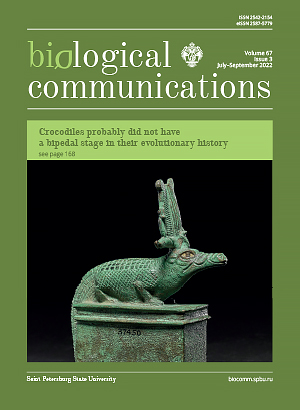Isolation, culturing and 3D bioprinting equine myoblasts
DOI:
https://doi.org/10.21638/spbu03.2022.302Abstract
Isolating and culturing myoblasts is essential for techniques such as tissue regeneration and in vitro meat production. This research describes a protocol to isolate primary myoblasts from skeletal muscle of an adult horse. The equine primary myoblasts expressed markers specific to myoblasts and had multipotent potential capabilities with differentiation into chondrocytes, adipocytes and osteoblasts in vitro. The horse myoblasts did not adhere to Cytodex 3 and grew poorly on CultiSpher-S microcarriers during in vitro cultivation. Our studies showed that the use of GelMa bioink and ionic cross-linking did not have negative effects on cell proliferation at the beginning of cultivation. However, cells showed reduced proliferative activity by day 40 following in vitro culturing. The population of primary equine myoblasts obtained from an adult individual, and propagated on microcarriers and bioink, did not meet the requirements of the regenerative veterinary and manufacturing meat in vitro regarding the quantity and quality of the cells required. Nonetheless, further optimization of the cell scaling up process, including both microcarriers and/or the bioreactor program and bioprinting, is still important.
Keywords:
myoblasts, bioprinting, microcarriers
Downloads
References
Downloads
Published
How to Cite
License
Articles of Biological Communications are open access distributed under the terms of the License Agreement with Saint Petersburg State University, which permits to the authors unrestricted distribution and self-archiving free of charge.





